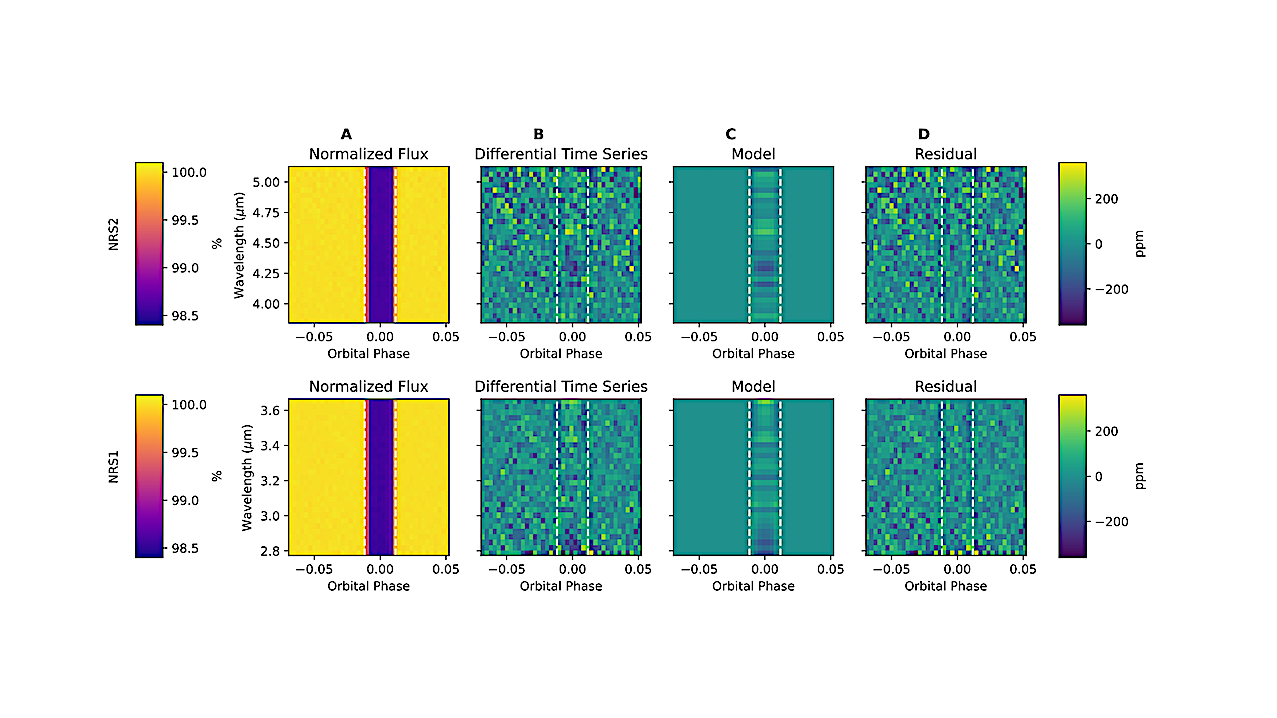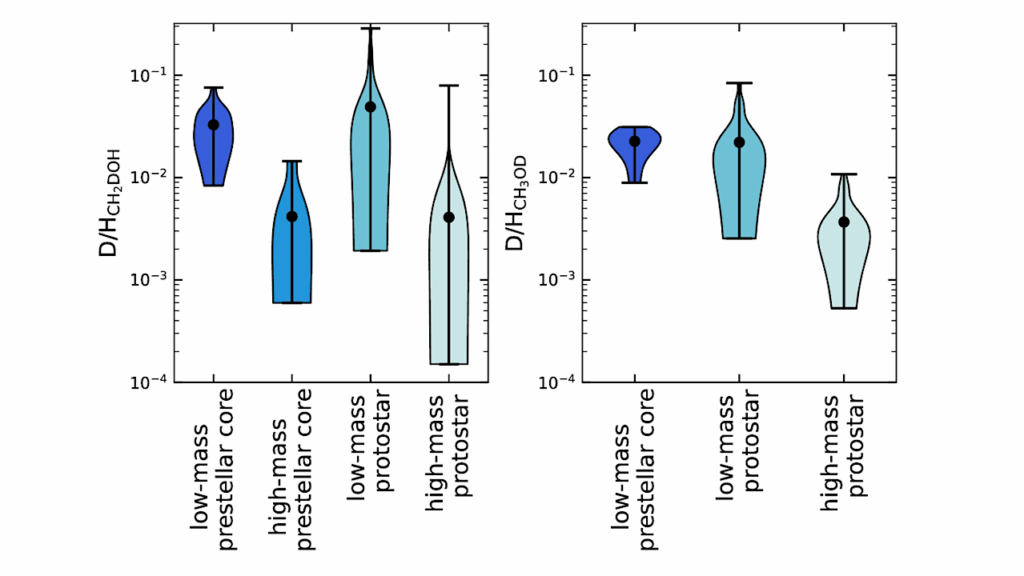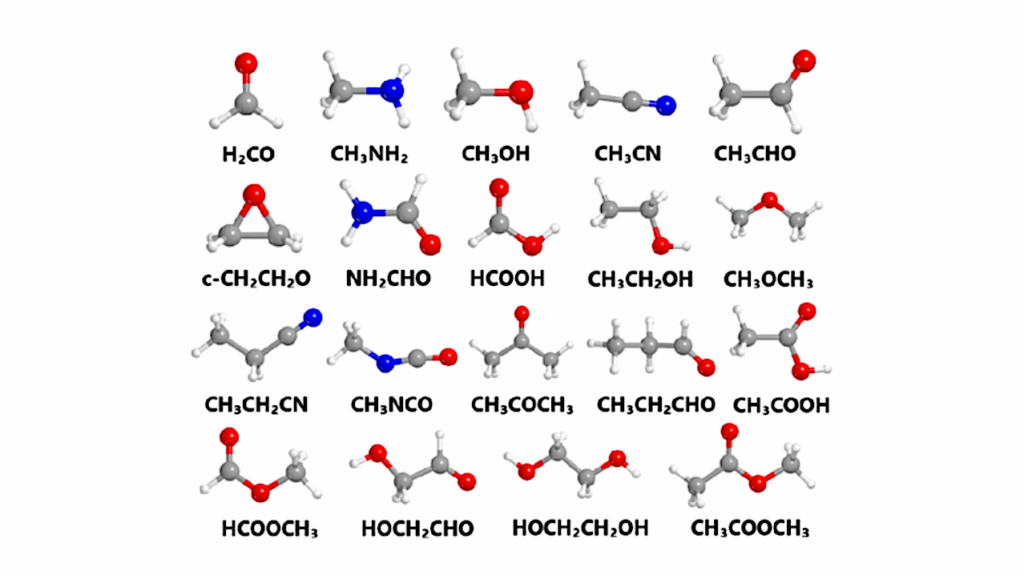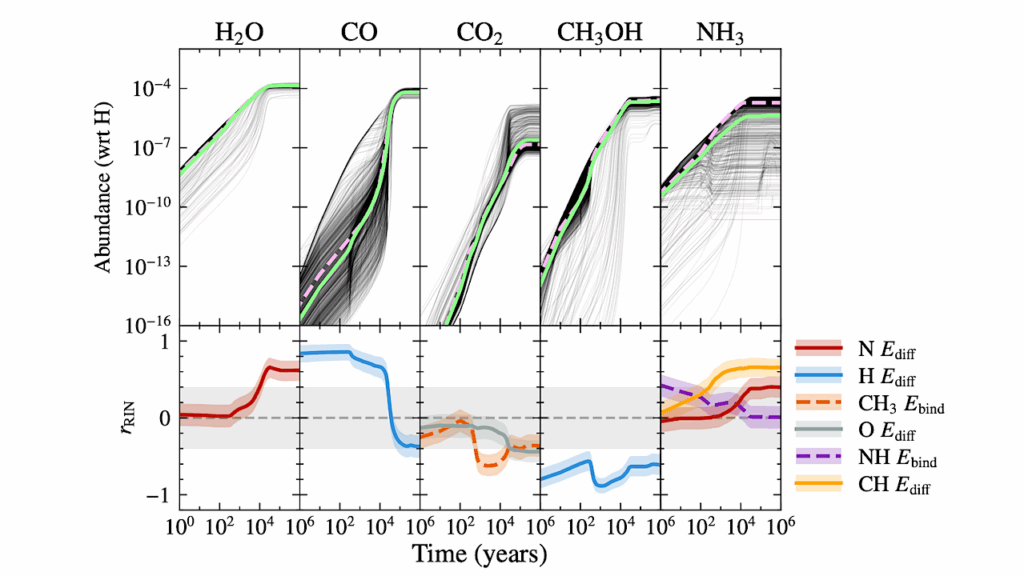Possible Carbon Dioxide Above The Thick Aerosols Of sub-Neptune GJ 1214 b

Sub-Neptune planets with radii smaller than Neptune (3.9 Re) are the most common type of planet known to exist in The Milky Way, even though they are absent in the Solar System.
These planets can potentially have a large diversity of compositions as a result of different mixtures of rocky material, icy material and gas accreted from a protoplanetary disk. However, the bulk density of a sub-Neptune, informed by its mass and radius alone, cannot uniquely constrain its composition; atmospheric spectroscopy is necessary.
GJ 1214 b, which hosts an atmosphere that is potentially the most favorable for spectroscopic detection of any sub-Neptune, is instead enshrouded in aerosols (thus showing no spectroscopic features), hiding its composition from view at previously observed wavelengths in its terminator. Here, we present a JWST NIRSpec transmission spectrum from 2.8 to 5.1 um that shows signatures of carbon dioxide and methane, expected at high metallicity.
A model containing both these molecules is preferred by 3.3 and 3.6 sigma as compared to a featureless spectrum for two different data analysis pipelines, respectively. Given the low signal-to-noise of the features compared to the continuum, however, more observations are needed to confirm the carbon dioxide and methane signatures and better constrain other diagnostic features in the near-infrared.
Further modeling of the planet’s atmosphere, interior structure and origins will provide valuable insights about how sub-Neptunes like GJ 1214 b form and evolve.
Everett Schlawin, Kazumasa Ohno, Taylor J. Bell, Matthew M. Murphy, Luis Welbanks, Thomas G. Beatty, Thomas P. Greene, Jonathan J. Fortney, Vivien Parmentier, Isaac R. Edelman, Samuel Gill, David R. Anderson, Peter J. Wheatley, Gregory W. Henry, Nishil Mehta, Laura Kreidberg, Marcia J. Rieke
Comments: 22 pages, 11 figures, Accepted in ApJL, Please also see a companion paper Ohno et al. (2024)
Subjects: Earth and Planetary Astrophysics (astro-ph.EP)
Cite as: arXiv:2410.10183 [astro-ph.EP] (or arXiv:2410.10183v1 [astro-ph.EP] for this version)
https://doi.org/10.48550/arXiv.2410.10183
Focus to learn more
Submission history
From: Everett Schlawin
[v1] Mon, 14 Oct 2024 06:09:06 UTC (1,739 KB)
https://arxiv.org/abs/2410.10183
Astrobiology, Astrochemistry,








